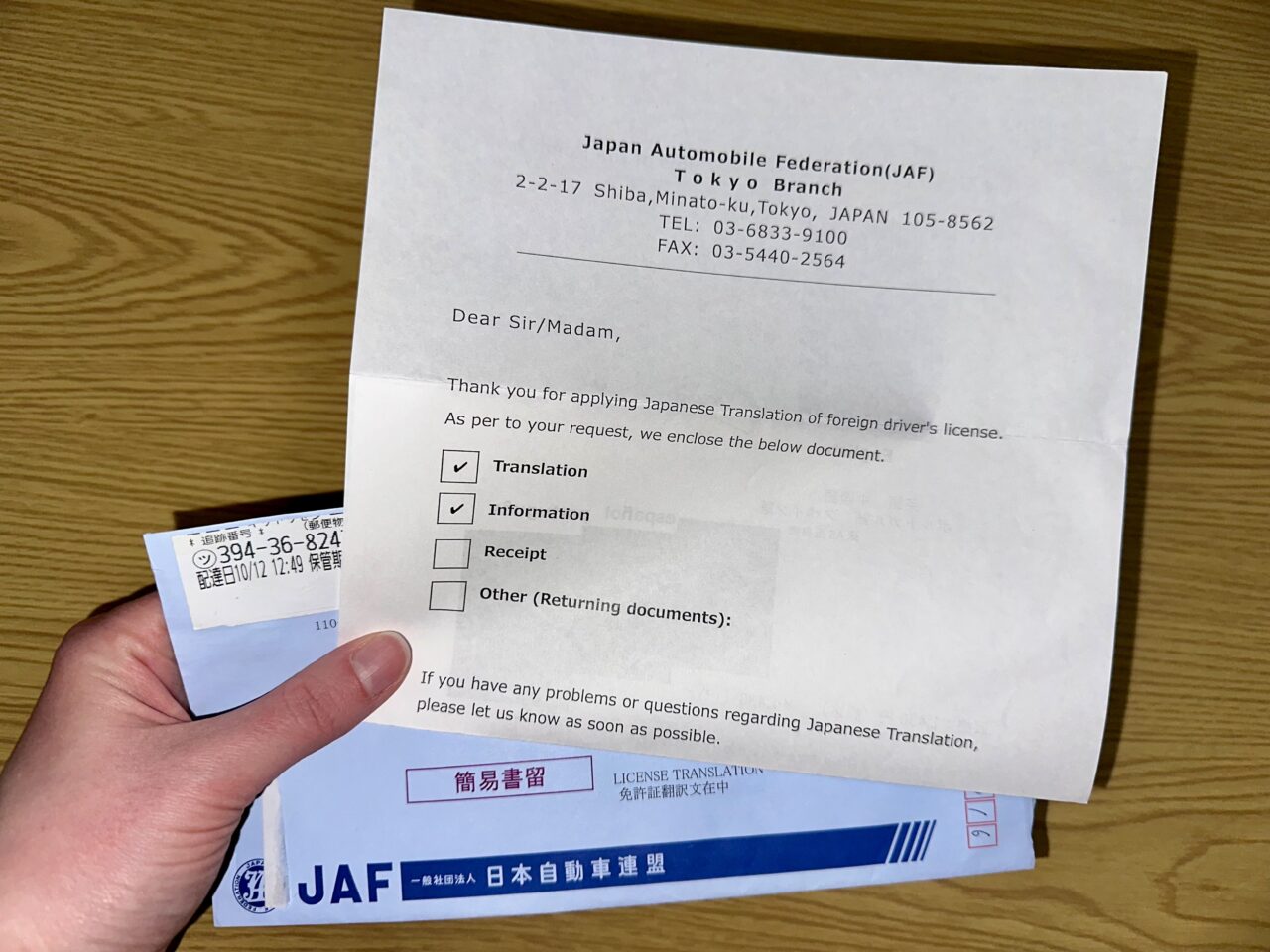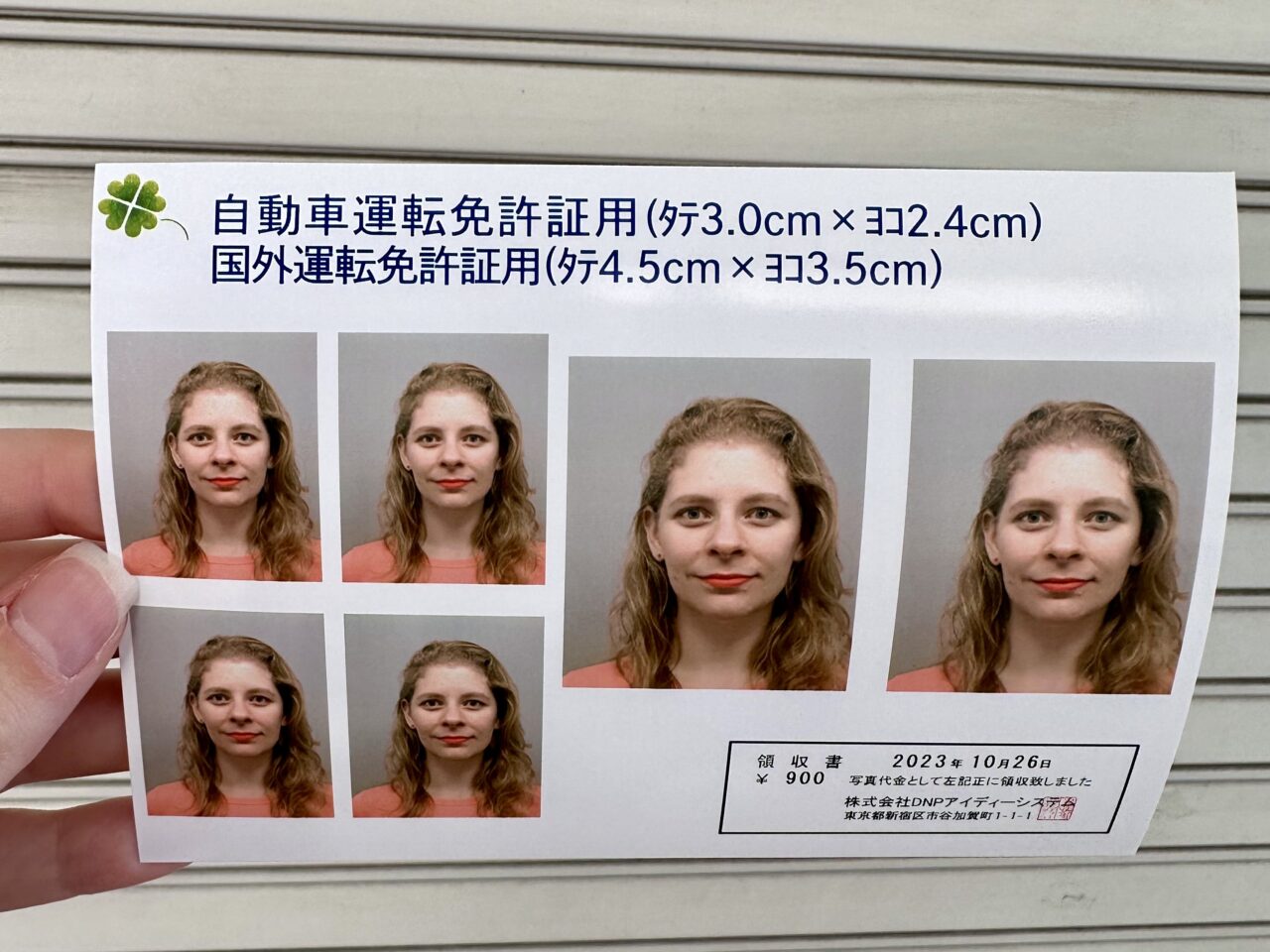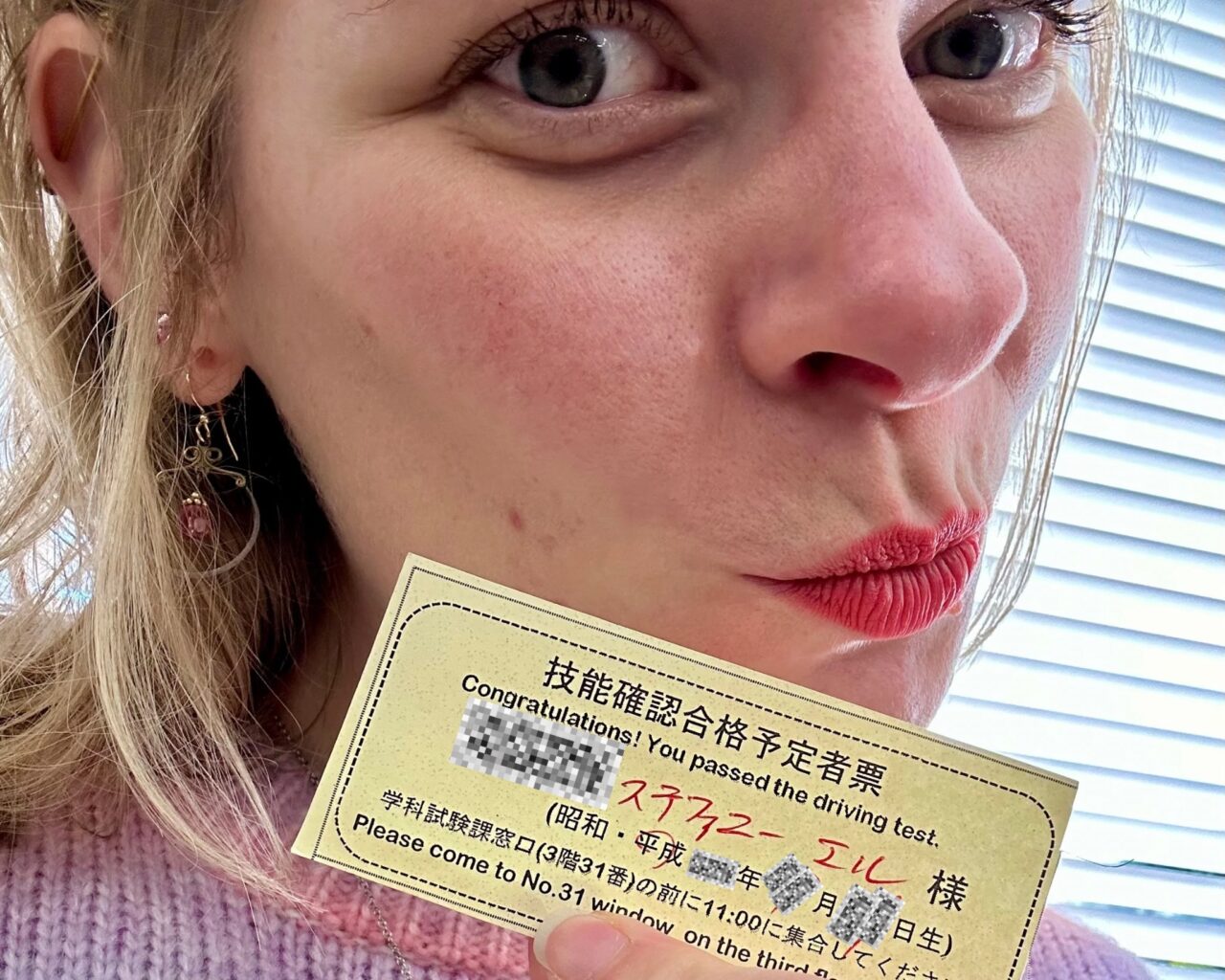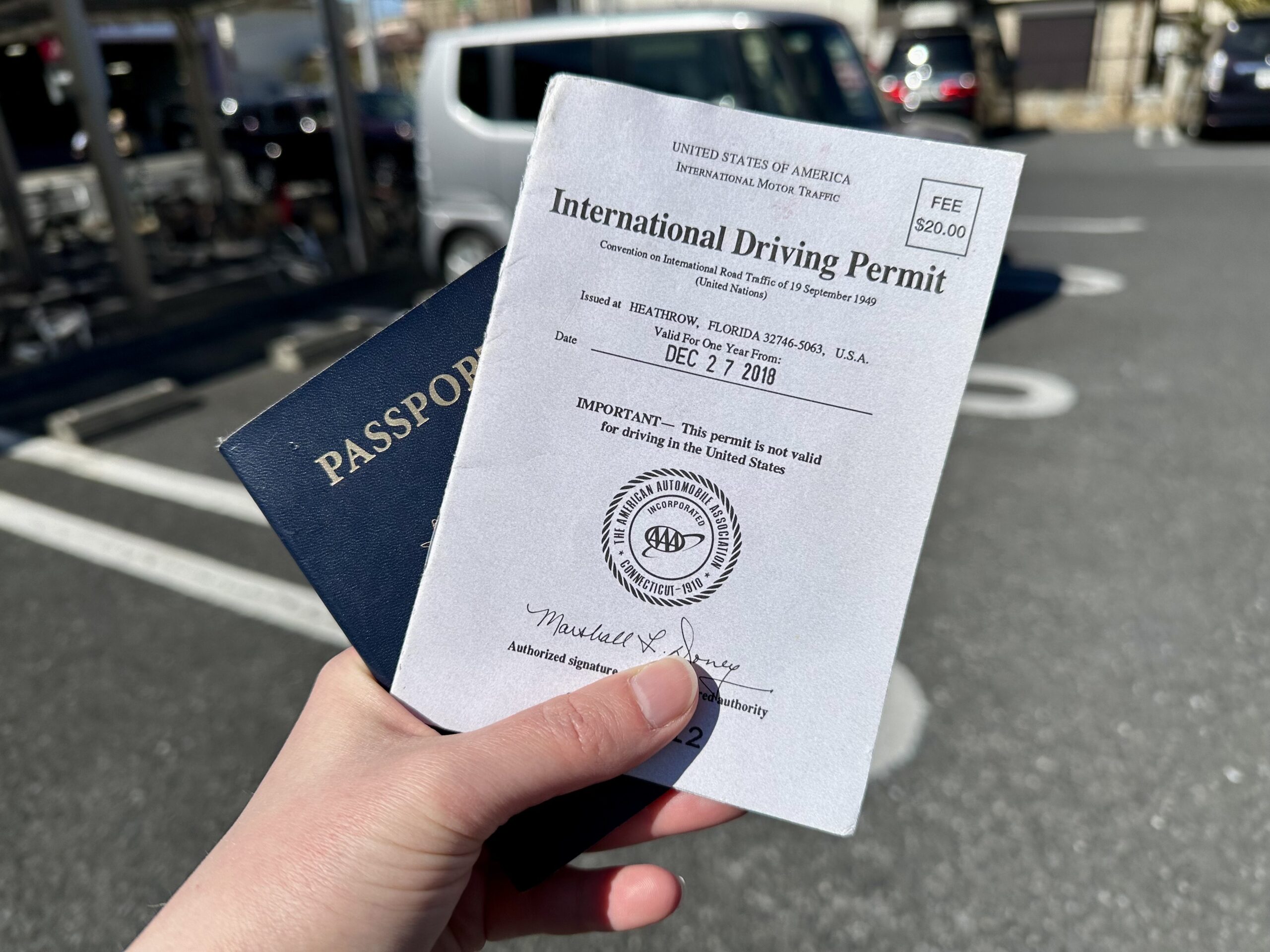On the Road Again- Converting Your Driver’s License to a Japanese One


Written by
Name: Stephanie
Country of origin: USA
How long you’ve lived in Japan: 6 years
Where you live in Japan: Tokyo (and 1 year in Gunma)
Instagram
So here you are, living in Japan (or preparing to), and you wanna put the pedal to the metal and get out there on the great big road! Well, before we fahr’n auf der Autobahn, let’s talk about how to convert your home country’s license to a Japanese license!
Who Is Eligible to Convert Their Driver’s License?
First, you must be 18, the age to drive in Japan. No taking your high school host family’s car out!
Assuming you’re 18 or older, if you have a current driver’s license in your home country or another country you’ve lived in, and you’ve stayed in that country with that license for more than three months, you are eligible to apply for a license conversion in Japan. If your foreign license is expired, you’ve had it for less than three months before leaving that country, or you don’t have a license, you are not eligible for a license conversion and must do the full Japanese license application process from zero. This includes acquiring a learner’s license before taking any other steps listed in this article.
Gather Your Documents
Before you go to your prefectural driver’s center to apply for your license conversion, let’s get all your ducks in a row. No matter which country you’re converting from, you need the following documents, but be sure to check with your prefecture’s driver’s center for any additional documents required in your prefecture.

- Application form
- Photo
- This can be taken at any of the ID photo booths around town.
- The Tokyo Driver’s Center in Fuchu (where I went) had one that was cash-only (no ATM on site)
- An official copy of your juminhyo (Certificate of Residence- 住民票), indicating your nationality.
- This can be obtained from your city hall or convenience store printer used with your MyNumber Card.
- If you’re not registered in the Resident Register System, your passport will do.
- Residence card (zairyu card- 在留カード)
- Current passport
- Your foreign driver’s license, still valid (not expired)
- Please note, an International Driving Permit will not suffice
- Official Japanese translation of your foreign license.
- This can be obtained through the Japan Automobile Federation (JAF) in-person or online, but starting 1 April 2025, applications for translation will only be accepted online.
- Documents that show when you left your country of licensure.
- Note, you have to have stayed in the country that issued your license for at least 3 months after obtaining the license.
- Passports with stamps are widely accepted, but fewer countries are stamping passports these days. Therefore, preparing other documents is highly recommended. It’s better to prepare a bunch and not need them in the end.
- I brought my old passport.
- To prove that my recently renewed US license wasn’t my first, a previous driver’s licenses was recommended, but I had destroyed them all. So I obtained a driving abstract (driving history record) from my US state’s Motor Vehicle Commission.
- Another option is a school or work transcript, pay stub, etc., that shows you were in that country while you had your license.
- Passports with stamps are widely accepted, but fewer countries are stamping passports these days. Therefore, preparing other documents is highly recommended. It’s better to prepare a bunch and not need them in the end.
- Note, you have to have stayed in the country that issued your license for at least 3 months after obtaining the license.
- Processing fee.
- In Tokyo, it’s ¥2550 as of this writing, please confirm with your prefecture’s driving center.
Once you have all these documents, you can go to the driver’s center in your prefecture and apply for the next step. If you don’t speak Japanese, you will need a translator to come with you. I’d recommend going early in the day.

Some Countries Don’t Need to Take the Driving Test?!
That’s right, select countries don’t need to take the written or practical driving test! You may think, “Oh, it must be countries that drive on the left side of the road, or maybe it’s other countries that can read kanji,” or something practical like that, but I’d like to invite you to remove any sense of reason and join everyone else in considering it kind of random.
Anyway, people holding licenses from the following countries can skip both the written and practical tests! Austria, Australia, Belgium, Canada, the Czech Republic, Denmark, Finland, France, Germany, Greece, Hungary, Iceland, Ireland, Italy, Luxembourg, Monaco, the Netherlands, New Zealand, Norway, Poland, Portugal, Slovenia, South Korea, Spain, Sweden, Switzerland, Taiwan, the United Kingdom, or the following US states: Colorado, Hawaii, Indiana, Maryland, Ohio, Oregon, Virginia and Washington.
People with a license from the US state of Indiana, you’re exempt from the practical exam, but you still have to take the written exam.
The Written Driving Test
Congratulations to the bilateral agreement folks, they can go home with their new Japanese license! The rest of us have to buckle up for a wild ride full of twists and turns (literally).
The written exam is not very hard as long as you’ve driven in Japan on the International Driving Permit or studied Japanese road laws a bit. When I took the test in Tokyo, I think it was around 10 questions, and English was available at no extra charge.
The Practical Driving Test
The practical test, on the other hand, is excruciatingly difficult. I’ve heard stories, and have actual friends, who have failed several times. There are two aspects to the practical driving test that I think make it difficult.
First, like many exams in Japanese society, in many cases it’s not really about practicality, but about being able to follow the rules no matter what to pass the test. For example, if there is a car (being driven by another test taker) coming, even if it’s super far away going at a snail’s pace, you must wait for it to pass to pull into traffic. The mirror checking procedure is calculated, tedious, and always the same, and if you don’t do it noticeably, you will be marked as unsafe. The timing of turning on your blinker or indicator is similar. Even getting in the car was a bit stressful.
Second, the test is hard!! Japan’s roads can be teeny tiny, almost impossible to drive a car through, so the test is designed to make sure you can handle those situations. If your wheel even touches the curb during a tight crank turn, it’s an instant fail.
I highly recommend trying to book a training session with a driving instructor, otherwise you’ll be on a highway to Hell. Even though I consider myself a competent driver in the US and had also been driving in Japan for a year on my International Driving Permit, if I hadn’t gotten the practice session with an instructor, Adam, I would have absolutely failed the test.

Adam was able to tell me all the tricks, what to do, and how to appear to the test scorer. I booked an hour slot at the Tokyo driver’s center in Fuchu on a Saturday, and he brought his car and let me drive the course and practice while giving me tips. He can also help you with the other licensing processes, including driver’s center interpretation and pre-visit document review, in the Tokyo area. Please contact him for further details, and tell him Stephanie sent you! (I get no bonuses if you contact him, nor do we have any contract. He was just so helpful to me, I want to tell everyone.)
Tokyo Area Driver’s License Advisor
Adam Hogan
Email: adam_injapan@hotmail.com
Facebook: https://www.facebook.com/profile.php?id=100010497217390
But Do I Really Need a Japanese License? Isn’t There Any Other Way?
As covered in my previous blog, people with driver’s licenses from a handful of countries can drive in Japan with that license plus an official Japanese translation, and people with driver’s licenses from numerous other countries can apply for an International Driving Permit (IDP). There are several countries throughout the world that do not qualify for either of these, so be sure to check. If you are lucky enough to be from one of the eligible countries, rejoice, but either method is only valid in Japan for 1 year. Therefore, I think the foreign license plus translation or IDP options would be good for a tourist, or someone who is moving to Japan and needs to drive immediately upon arrival, but just bear in mind the 1-year expiration date. Aikagi also has a comprehensive article all about driving in Japan!
My blog post about IDP and license translations

Aikagi’s all-encompassing driving article

Ready? Then Shut Up and Drive!
Now that you’ve got your shiny new Japanese driver’s license, you can drive past your ex’s house and sing Olivia Rodrigo! But be sure to check out the rules of the road in Japan first! I’ll post soon about some driving tips!

Easter Eggs Again
I hid 4 references to songs about cars or driving in this blog post! That’s one less than last time. Did you find them all? If so, here’s a virtual high-five!
Useful Links
Japan Automobile Federation (JAF)
Aikagi’s all-encompassing driving article

My blog post about IDP and license translations

Tokyo Area Driver’s License Advisor
Adam Hogan
Email: adam_injapan@hotmail.com
Facebook: https://www.facebook.com/profile.php?id=100010497217390
